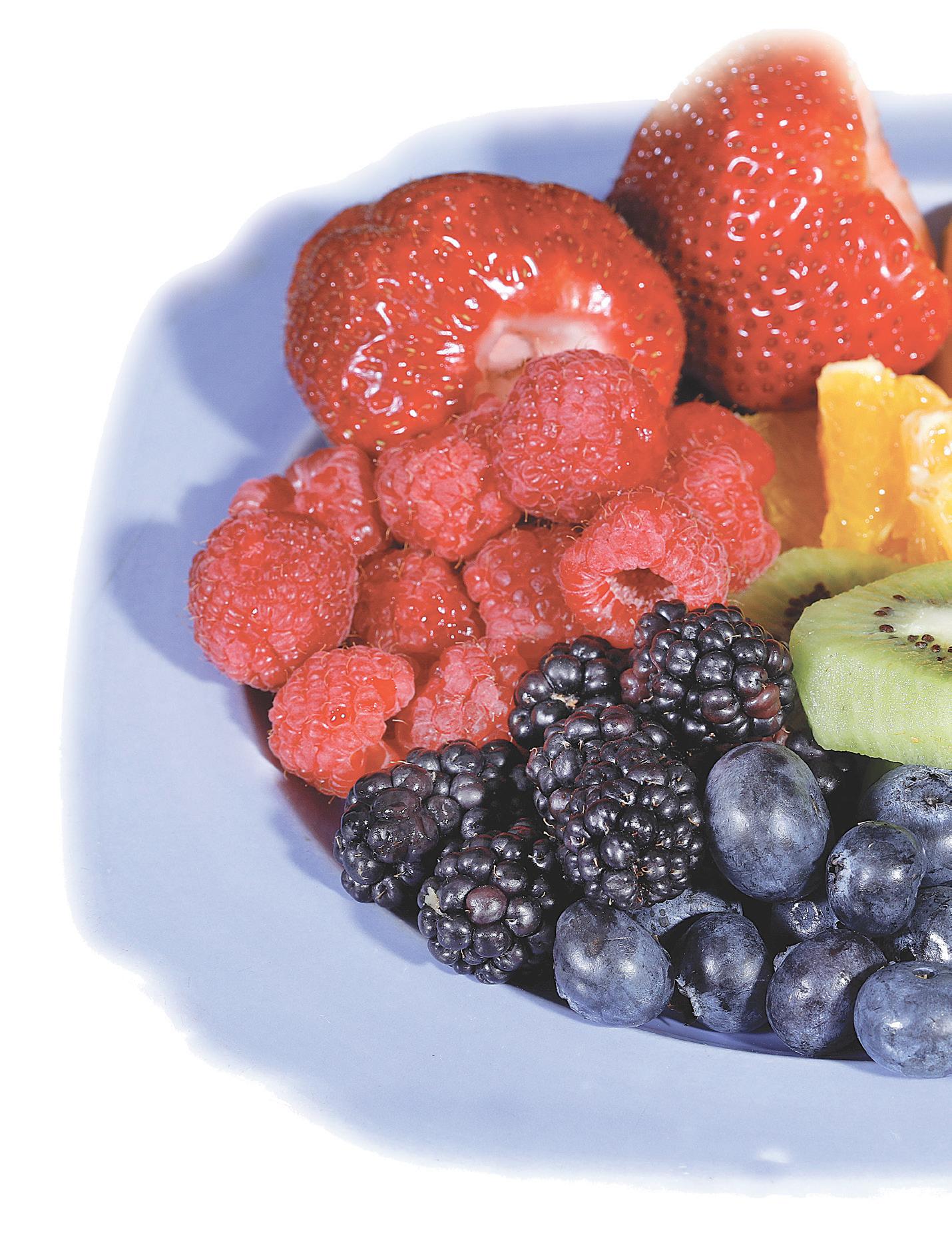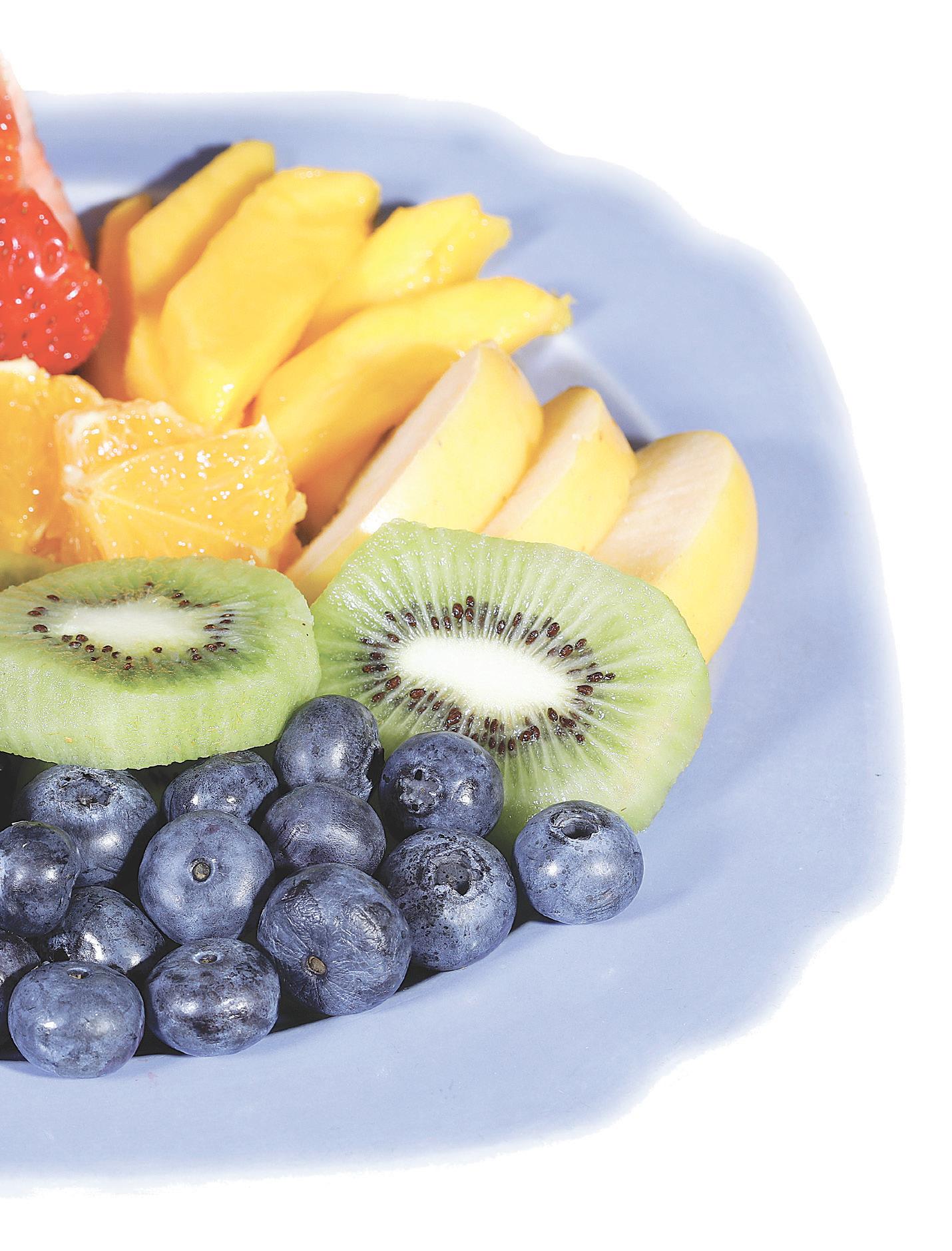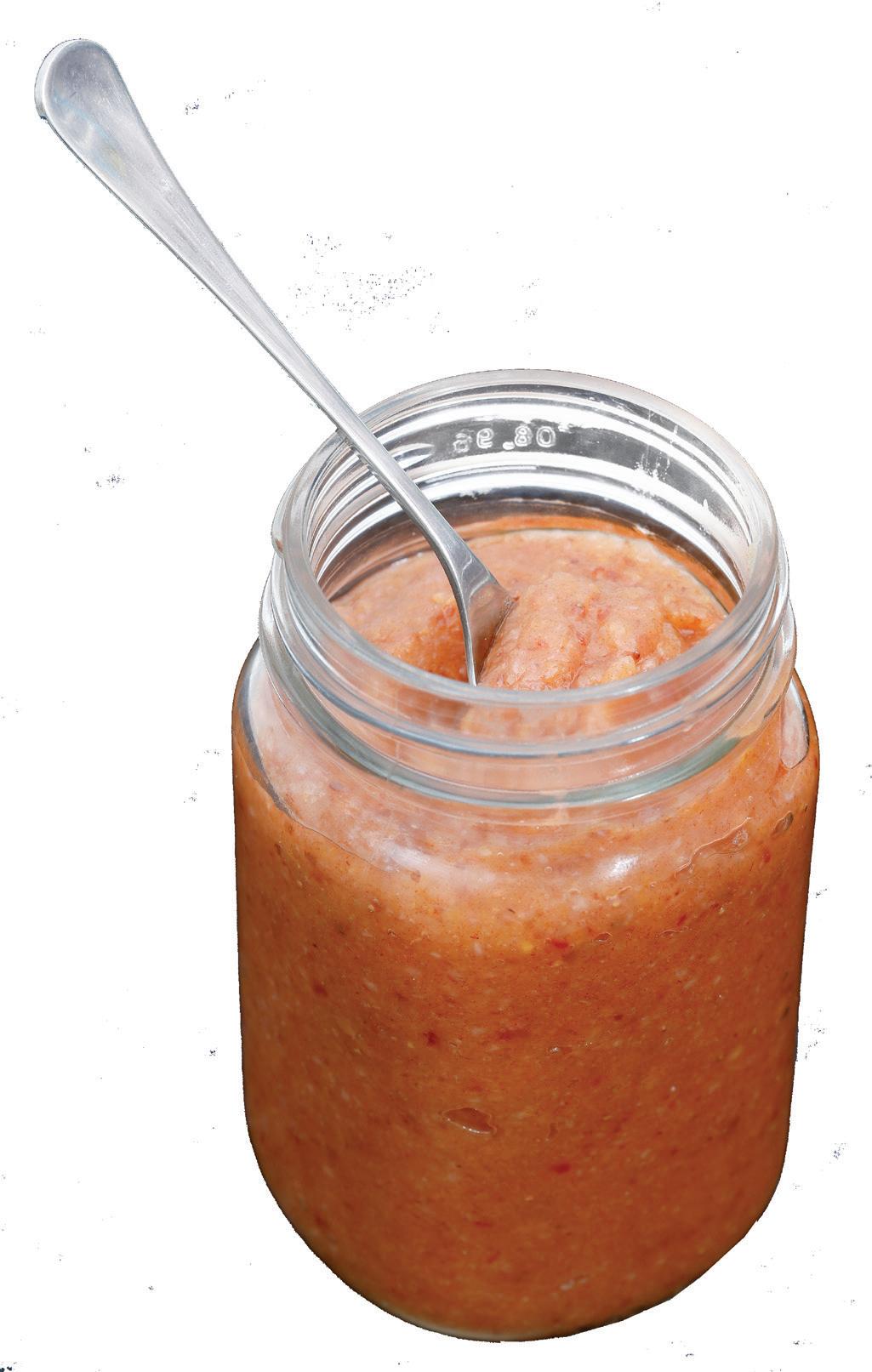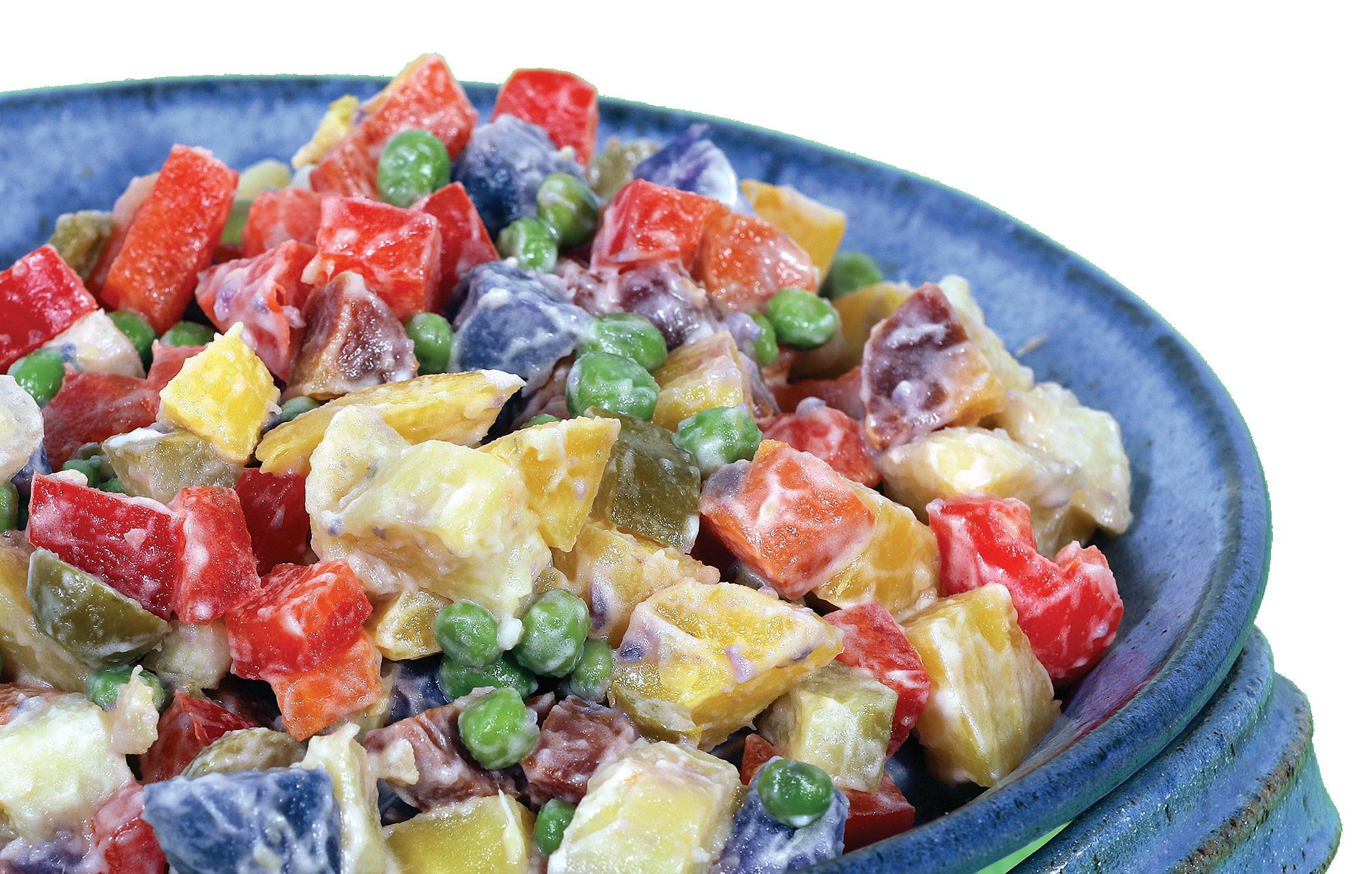
3 minute read
Eat your colors, junior edition
BY BONNIE AMBROSI
Irecently wrote a column for the Duluth News Tribune titled “Eat Your Colors.” It featured a Rainbow Russian Salad recipe with vegetables of many hues.
The catch-phrase “eat your colors” comes from nutritional research showing that certain compounds in plants that protect them from disease, pests and environmental stresses show up as various plant colors. These compounds are as beneficial for human health as they are for the plants. Therefore, eating many different colors of plants provides us with a wide range of healthful nutrients.
My teenage daughter was intrigued by the concept of “eating your colors,” but she didn’t care for some of the ingredients in my salad. It’s common for kids to be picky about vegetables; young taste buds are sensitive, and the spicy or bitter flavors of vegetables are sometimes too strong for their liking. Fortunately, fruits also provide an entire kid-friendly rainbow of phytonutrients.
U.S. dietary guidelines recommend a minimum of two servings of fruit per day. Age-specific recommendations vary somewhat but generally they go like this: ages 1-2 need ½ cup of fruit per day, ages 2-3 need 1 cup of fruit, ages 4-13 need 1½ cups of fruit, ages 14-18 need 2 cups of fruit. They also should be eating a variety of vegetables each day.
Why should kids eat fruit? Fruit is an important source of essential vitamins and minerals such as vitamin C, beta-carotene and potassium. The many colors in fruit are markers for phytonutrients that have benefits such as supporting the immune system and preventing cancer. Fruit is a great source of fiber, which keeps kids’ digestion and elimination working well. Fruit is lower in fat and calories than many other snack foods. And get this: Some research suggests that eating fruit actually improves a child’s ability to learn!
Most sources agree that eating whole fruit is preferable to drinking juice. The whole fruit includes fiber and nutrients that juice may lack, and we tend to eat fruit more slowly than we drink juice.
Shop for fruit with your kids and ask them to help you find a variety of colors. It’s a perfect opportunity to try out some new produce. Here are examples of each hue.
Red: apples, cherries, red grapes, pears and plums, raspberries, strawberries, red cherry tomatoes, watermelon
Orange/Yellow: apricots, cantaloupe, mango, nectarines, oranges, peaches, pineapple, yellow apples, pears, orange cherry tomatoes
Green: avocado, green apples, green grapes, green pears, honeydew melon, kiwi fruit
Blue/Purple: blackberries, blueberries, blue or purple grapes, black plums
The prep for “eating your colors” couldn’t be easier. Simply toss washed fruit into a bowl. For a more artful presentation, create a produce color
Another kid-friendly fruit idea comes from my friend Sue Baker, who likes to cook with her twin grandsons, Matthew and Mason Jobin. They’ve been making this fruit spread for four years and are “always experimenting with new combinations of fruit,” she said. It requires no cooking and uses no refined sugar. Instead, Sue includes a few medjool dates.
If you’re not familiar with dates, medjools are the large ones with the pits still in (but they’re easy to remove); deglets are smaller and usually pitted. Dates are not only deliciously sweet, but have twice as much potassium as bananas.
Sue says they enjoy this spread on pancakes, toast, crackers, plant-based ice cream, and “sometimes just on a spoon!” The recipe is easily doubled for a larger batch. The name “Jober” is a combination of Jobin (Matthew and Mason) and Baker (Sue). — MDT
Bonnie Ambrosi lives in Duluth and is an organizer of The Vegan Cookbook Club which meets at 11:30 a.m. on the first Thursday of every month at Mount Royal Branch Library. Contact her at bonnieambrosi@gmail.com.
Jober Jam
Yield: 1 cup
1 cup of fruit (Any fruit will do. One idea is to combine berries, pineapple and mango.)

2-4 medjool dates, pitted (Soaking the dates makes them earier to process but is not essential.)
Combine fruit and dates in a high-powered food processor. Blend to desired consistency. Store in refrigerator and use within a week.

Rainbow Russian Salad

Yield: about 8 cups
3 medium potatoes (include one or more blue potatoes)
2-3 medium carrots (include orange and purple)
1-2 medium golden beets and/or yellow carrots
1 cup fresh or frozen peas (regular, sugar snap or snow peas)
1 red or orange bell pepper or half of each, chopped
6 green onions, sliced
½ cup chopped dill pickle
½ cup sliced olives (any type)
¼ cup chopped jalapeno slices
3 tablespoons vegan mayonnaise Salt to taste
1. Scrub potatoes and scrub or peel carrots, boil until tender but not mushy, 15-20 minutes. Drain, rinse briefly in cool water, peel potatoes, and cube. (Cooking the potatoes in their skins preserves the color. The skins are easy to remove after cooking.)
2. Wash but do not peel beets, simmer until tender, 20-30 minutes. Drain, peel, and cube.
3. Cook peas briefly until bright green, drain.
4. While these vegetables are cooking, chop the other ingredients.
5. Combine chopped cooked vegetables with all other ingredients in a large bowl and stir gently to coat everything with vegan mayo. Salt to taste.
6. Refrigerate until ready to serve, or eat right away.
4 5 6 7 8 Finished Bear










